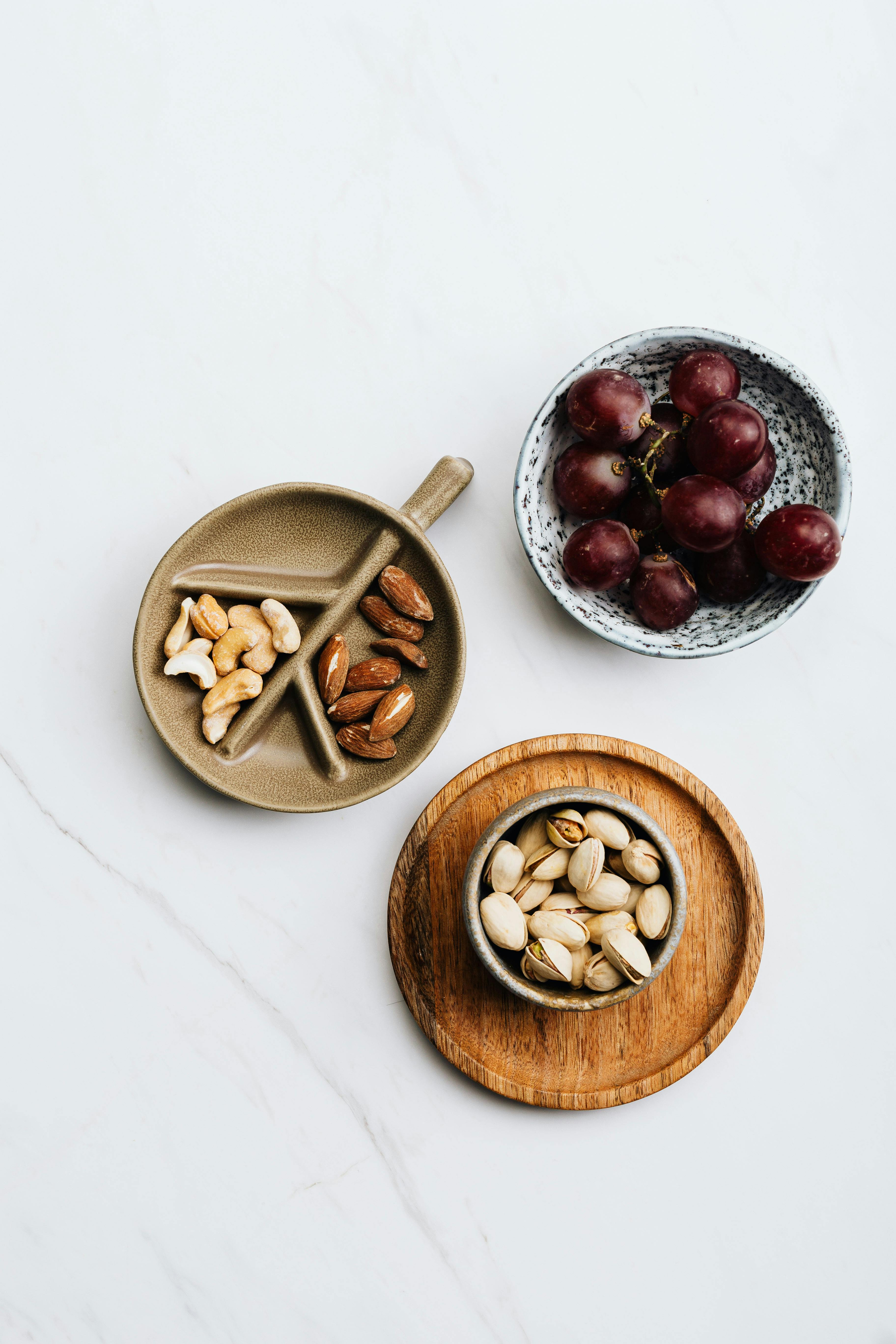Effective Ways to Optimize Your Norwegian Forest Cat's Diet in 2025

Effective Ways to Optimize Your Norwegian Forest Cat's Diet in 2025
When it comes to the health and well-being of your Norwegian Forest Cat, diet plays a fundamental role. A well-structured Norwegian Forest Cat diet not only contributes to a shiny coat and vibrant energy but also supports overall health, helping prevent common diseases. In 2025, the focus on high-quality nutrition will become increasingly essential, as pet owners become more aware of the impact of food on their feline companions' health. This article will discuss effective ways to optimize your Norwegian Forest Cat's diet, covering vital components like protein requirements, essential nutrients, and different food options.
Understanding how to balance a Norwegian Forest Cat's nutrition is crucial for their growth stages, from energetic kittens to senior cats. We'll explore the benefits and drawbacks of various food types, including wet food versus dry food, while providing practical feeding tips to ensure your cat maintains a healthy weight. Ultimately, by following a few key strategies, you can tailor a diet that meets your Norwegian Forest Cat's unique needs.
As you read on, you'll discover the best food for Norwegian Forest cat diets, recommendations for homemade cat food, and advice on keeping your furry friend hydrated. Let’s dive into the nutritional essentials for these magnificent creatures.
Understanding Norwegian Forest Cat Nutrition
To fully appreciate how to optimize your Norwegian Forest Cat's diet, it's essential to start with the basics of their nutritional needs. Norwegian Forest Cats, like other breeds, require a well-balanced diet that fulfills their unique biological needs. The primary components include proteins, fats, vitamins, and minerals, which should all be reflected in their daily consumption.
Protein is a vital element, as it supports muscle development, immune function, and more. Generally, the optimal protein requirements for these cats range from 30% to 45% of their diet, depending on their activity level. High-quality cat food that lists animal protein sources—like chicken, turkey, or fish—as the first ingredient is a great choice. This ensures that your cat receives sufficient muscle-building nutrients.
Fat content is another critical component, contributing to energy levels and skin health. Ideally, a Norwegian Forest Cat's diet should include 15-30% fat. Sources like fish oil can provide omega fatty acids important for maintaining healthy skin and a beautiful coat. Moreover, ensuring adequate hydration through high-quality cat food or proper feeding schedules can help prevent urinary tract issues.
In addition to these nutrients, minerals like calcium, phosphorus, and taurine are essential for maintaining strong bones and heart health. An appropriate balance between these nutrients is crucial for achieving optimal body condition, hence a regular check-up with your veterinarian will help assess your cat's specific dietary needs.
With this foundational understanding of Norwegian Forest Cat nutrition established, we shift our focus to meal options that align with their unique needs.
Choosing the Best Food for Norwegian Forest Cats
When it comes to selecting the right type of cat food, pet owners are often faced with myriad options. Understanding the differences between commercial cat food, homemade cat food, and how to navigate nutritional labels can streamline this decision-making process.
Commercial cat food typically comes in two forms: wet and dry. Each has its distinct merits; wet food is highly palatable and ensures better hydration, while dry food tends to be more convenient and promotes dental health by reducing tartar build-up. A balanced diet could include both types. However, be cautious of food allergies in cats, as some cats may have sensitivities to certain ingredients.
For those considering homemade cat food, it is critical to research essential nutrients. Homemade diets provide the opportunity to control the quality and type of ingredients. Ensure to include safe meats, vegetables, and supplements necessary for complete nutrition. Consulting with a veterinarian is necessary to establish a proper homemade recipe that ensures a balanced diet for your Norwegian Forest Cat.
It’s also crucial to recognize the dietary needs that change with your feline's life stages. For example, kittens have higher energy demands and require extra nutrients to support growth. Thus, choosing kitten-formulated foods is essential. In contrast, senior Norwegian Forest Cats benefit from food designed to maintain joint health and support a healthy weight.
Regularly reviewing the ingredients in your selected cat food is vital. Look for high-quality sources, avoid fillers, and seek advice on the best brands for cat food that align with your Norwegian Forest Cat's specific needs.

Feeding Schedules and Portion Control
Establishing a feeding schedule and practicing portion control are pivotal elements in optimizing your Norwegian Forest Cat's diet. The goal of these practices is to regulate weight, promote metabolic health, and avoid obesity—which is increasingly common among house cats.
For most adult cats, feeding two meals per day is generally recommended. If you have a kitten, you might want to offer three to four smaller meals to accommodate their higher energy levels and nutritional needs. Keep in mind that maintaining a healthy weight will also depend on understanding your cat's calorie intake and energy output. Regularly monitoring their body condition score can help provide insights into whether you're meeting their needs effectively.
Portion control is essential; this prevents overfeeding while ensuring your cat is getting the right amount of nutrients. Consult with your veterinarian to calculate your cat’s appropriate calorie intake based on their weight, age, and lifestyle. As a rule of thumb, utilize the feeding recommendations on the cat food packaging while being mindful of your cat's true level of activity.
Another aspect is evaluating treats. While cat treats for Norwegian Forest Cats can be motivating during training sessions, they should only serve as supplements to their regular meals—typically accounting for no more than 10% of their total daily caloric intake to avoid unwanted weight gain.
Employing these feeding strategies will help develop a consistent routine, ensuring your Norwegian Forest Cat receives the proper nutrition without the risk of obesity. Now that we have explored feeding schedules and portion control, let's look at common mistakes owners make regarding their cats' diets and how to avoid them.
Avoiding Common Dietary Mistakes
Many pet owners unintentionally make dietary mistakes that can negatively impact their Norwegian Forest Cats' health. Awareness and education regarding these common pitfalls are essential for providing a balanced diet.
One frequent oversight is the reliance on low-quality cat food filled with fillers and artificial ingredients, which can lead to insufficient nutrition. Prioritizing high-quality cat food and natural ingredients is vital to meet your cat's dietary needs. Look for veterinary-recommended diet options or premium cat food options that emphasize real meat and avoid grain fillers.
Another aspect to consider is the misinformation surrounding cat feeding myths. For instance, some owners may mistakenly believe that cats can thrive on a vegetarian or solely plant-based diet. However, due to their obligate carnivorous nature, cats require essential nutrients found only in animal tissues, such as taurine, which supports heart health and vision.
Furthermore, neglecting the importance of hydration can lead to significant health challenges, particularly with urinary tract health in Norwegian Forest Cats. Always ensure your cat has access to fresh water and consider incorporating wet food into their diet for added hydration. Look for signs of dehydration, which can include lethargy or less frequent urination.
Monitoring your cat's response to food during changing diets is critical as well. Transitioning cat food too quickly can lead to digestive disturbances. It's generally recommended to introduce new food gradually over a week, allowing their digestive system to adjust appropriately.
By avoiding these common dietary mistakes, you can contribute positively to your cat's health and longevity. Understanding these pitfalls brings us to the final portion of our discussion—supplementation and enhancing your Norwegian Forest Cat's diet with additional nutrients.

Enhancing Your Norwegian Forest Cat's Diet with Supplements
In addition to selecting high-quality food, incorporating nutritional supplements can further enhance your Norwegian Forest Cat's overall health. Several key supplements can provide extra benefits, especially for specific needs.
Vitamins are fundamental for maintaining immune function, and ensuring your cat receives essential nutrients is crucial. Vitamin E and omega fatty acids support skin and coat health, while B vitamins play a crucial role in energy metabolism.
Fiber is another important component that supports digestive health in cats. Including necessary fiber in cat food can help prevent obesity and hairballs—a common concern for long-haired Norwegian Forest Cats. Fiber-rich foods can also support healthy stool and regularity.
Working with your veterinarian to determine whether your cat requires specific dietary supplements can be beneficial. For instance, growth or senior formulas often contain added nutrients targeting specific life stage needs. Similarly, if your Norwegian Forest Cat is highly active, adding protein or recovery supplements can enhance muscle recovery and overall vitality.
Lastly, monitor and adjust your cat's diet as necessary, especially if they're exhibiting any signs of dietary deficiencies or health issues. Keeping communication lines open with your vet about your cat's progress and nutrition can result in lasting improvements in their dietary habits.
As we conclude our exploration of optimizing your Norwegian Forest Cat's diet, remember that maintaining a balanced and nutrient-rich diet is essential in ensuring their long-term health and happiness.
Q&A Section
Q: What is the best food for Norwegian Forest Cats?
A: The best food for Norwegian Forest Cats includes high-protein options rich in animal-based ingredients, along with essential vitamins and minerals. Veterinary-recommended diets are ideal.
Q: How many times a day should I feed my cat?
A: Adult Norwegian Forest Cats typically thrive on two meals per day, while kittens may need three to four smaller meals to support their growth.
Q: Are homemade diets healthy for Norwegian Forest Cats?
A: Yes, homemade diets can be healthy if they are balanced and nutritionally complete. Consult a veterinarian for appropriate recipes and supplements.
Q: How can I help my cat maintain an ideal weight?
A: Portion control, regular feeding schedules, and monitoring your cat's body condition score can help control weight effectively.
Q: What dietary supplements should I consider for my Norwegian Forest Cat?
A: Key supplements include omega fatty acids for skin health, fiber for digestive support, and vitamins tailored to your cat's life stage and specific health concerns.